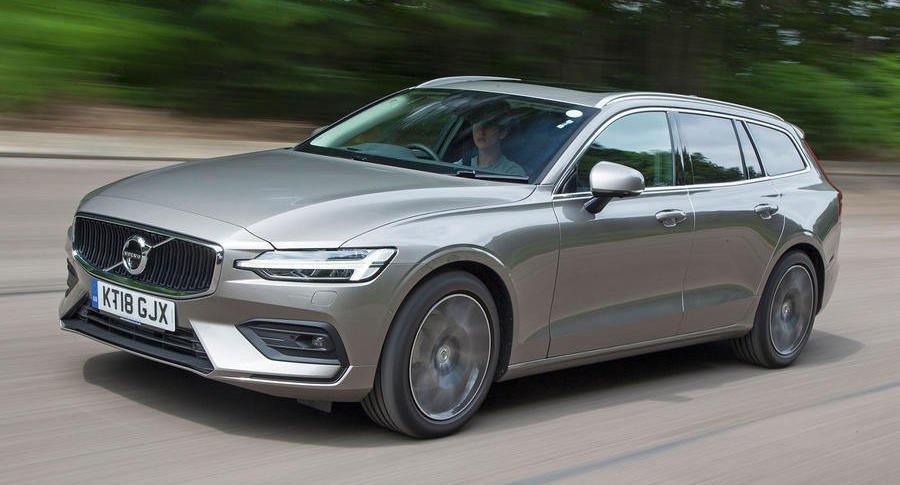Banish thoughts of Margo and Jerry and revel instead in the undeniable allure of the modern Volvo estate. These days, both this V60 and the larger V90 add more than a touch of glamour to many a Home Counties school run.
Now, good looks aren’t everything. Volvo knows this, and that’s why you can only get the second-gen V60 with sensibly sized 2.0-litre petrol and diesel engines. The range initially kicked off in 2018 with a 148bhp version, badged as the D3, and a more powerful 187bhp unit, designated D4. For petrol fans, there’s a 247bhp T5 and plug-in hybrid T8 models in 385bhp standard and 399bhp Polestar Engineered forms. All diesel models can be had with either a six-speed manual or an eight-speed automatic. Petrols are auto only.
In late 2020, all the pure-petrol and diesel engines were dropped and replaced by petrol and diesel hybrids, which were badged with a B.
Trim-wise, even the entry-level Momentum model gets many luxuries, such as sat-nav, LED lights, a powered tailgate and a 12.3in digital instrument display. Momentum Pro adds leather trim, heated front seats, adaptive LED headlights and a head-up display. R-Design is sporty, because it has lowered suspension, larger (18in) alloy wheels and gloss black exterior pieces. Inscription trim comes with wood inlays inside and plenty of chrome outside, while Pro adds 19in alloys and ventilated seats with nappa leather.
The plug-in hybrid T8 Polestar Engineered version has 19in alloys, an upgraded Harman Kardon sound system and a set of Ohlins adjustable dampers and a bespoke suspension tune.
With many illustrious rivals in the mix, the V60 needs to be decent to drive. Thankfully, it is. So long as you stick to the standard suspension set-up and either 17in or 18in alloys, it strikes a great balance between ride comfort and precise handling. Larger 19in wheels are best paired with the sportier suspension of R-Design models, because the adaptive dampers fitted to some V60s can’t cope with vertical movements very well.
Inside, there’s plenty of room for people and luggage. The driver and front passenger have very comfortable seats with lots of leg, head and shoulder room. The raised centre console and well-padded door-mounted armrests are great for long journeys, too. Rear occupants also get ample space to spread out. The boot is one of the biggest in the class and it’s very well thought out.
Prices for the V60 start at £20,000, but budget between £21,000 and £26,000 for something from late 2018 or early 2019. Spend between £26,000 and £35,000 on a 2020 car. For one of the rarer T8 plug-in hybrids, you’ll need at least £40,000.
Need to know
Both the D3 and D4 achieve an average of 55.4mpg (WLTP) with a manual gearbox, but this drops to 51.4mpg and 52.3mpg respectively with the auto. Four-wheel-drive D4s are 47.9mpg.
The AEB system, which is supposed to apply the brakes when the forward collision sensors detect an imminent impact, might not actually do so on some models built after January 2019. A software update will sort the issue. Contact a Volvo dealer if you have concerns about this on your car.
The V60 finished ninth out of 25 cars in the executive car class in the recent reliability survey by our sibling mag What Car?. Volvo as a manufacturer ranked 11th out of 31 brands in the same survey.
Our pick
2.0 D4 Momentum Pro: The D4 probably makes most sense for most people. Momentum trim is well specified, but we’d pick Momentum Pro, because it adds kit such as leather trim, a head-up display.
Wild card
2.0 T8 Polestar Engineered: T8 plug-in hybrids are deliciously quick (0-62mph in 4.6sec) and combine an uprated petrol engine (to power the front wheels) with an electric motor (for the rear wheels).
Related News

